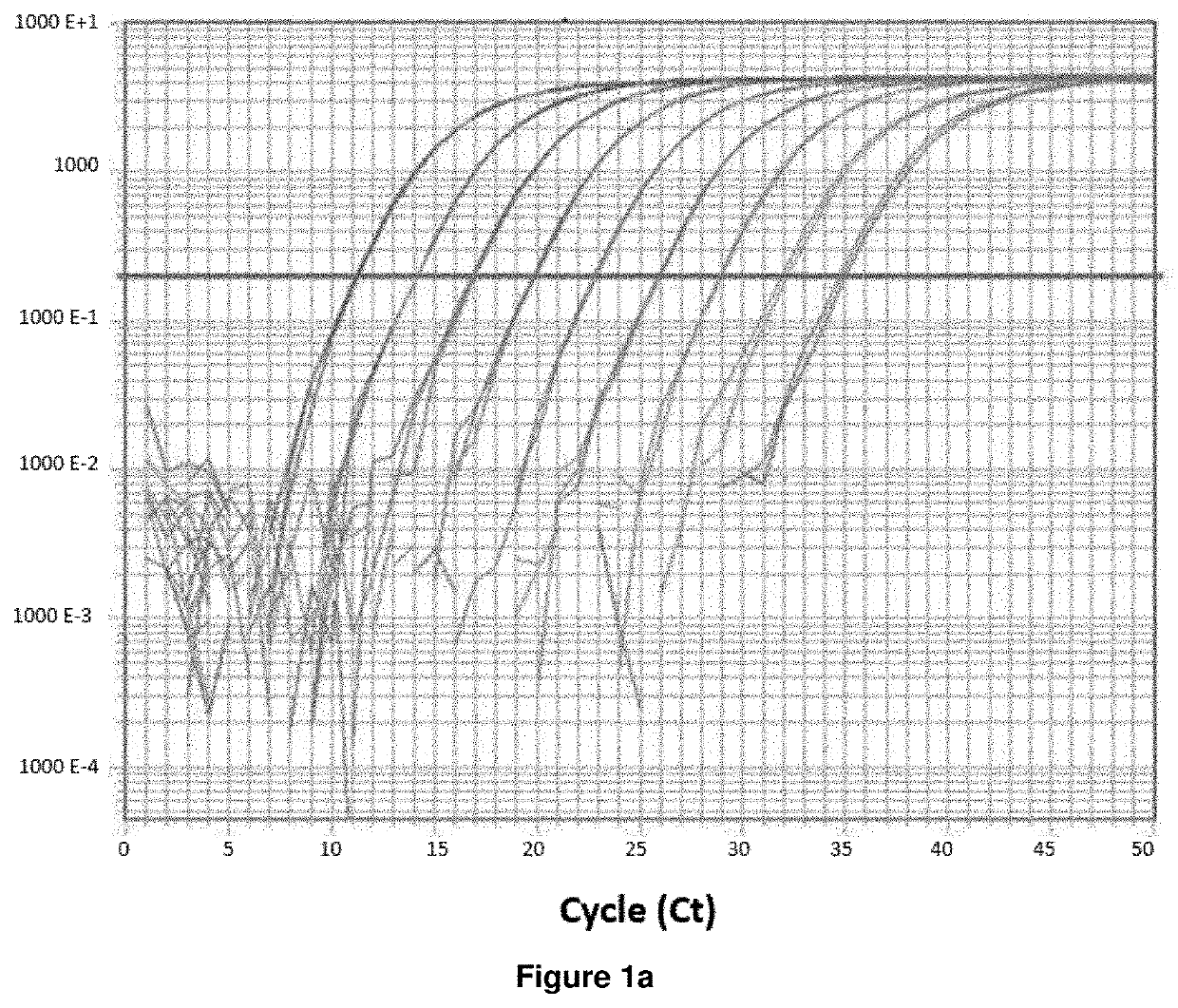Method of determining prognosis in patients with follicular lymphoma
a technology of follicular lymphoma and prognosis, which is applied in the field of determining the prognosis of patients with follicular lymphoma, can solve the problems of low individual accuracy, time-consuming and costly, and difficult estimation of the prognosis of a particular patient with a newly diagnosed fl, and achieve the effect of reducing the survival tim
- Summary
- Abstract
- Description
- Claims
- Application Information
AI Technical Summary
Benefits of technology
Problems solved by technology
Method used
Image
Examples
example 1
[0023]Analysis of miR-31 expression in FL samples was performed to define the role of miR-31 in the FL prognosis. Both absolute and relative quantification of miR-31 were chosen as approaches. The relative quantification is technically simpler because it does not require the use of synthetic standards, but the results obtained can only be reliably applied within a single laboratory or institution. The absolute quantification, in contrast to relative quantification, allows an accurate determination of the number of miRNA copies in the sample, as well as offers the possibility to do this reproducibly in different laboratories. To calculate the copy number, a standard dilution series with known number of molecules was prepared to cover the required number of qRT-PCR cycles. Modification of qRT-PCR is required for its application in the miRNA region due to the specific properties of the miRNA. The biggest obstacle is the length of the miRNA, which corresponds to the length of commonly u...
example 2
[0025]MiRNA from FFPE tissue blocks is isolated as recommended and using the chemicals of the High Pure miRNA Isolation Kit (Roche). To isolate RNA from paraffin, the tissue is first dewaxed and then digested with proteases. RNA in the presence of the chaotropic guanidine thiocyanate salt is bound to glass fibers in a column filter. Impurities are removed from the bound RNA by a series of washing steps and subsequently eluted with a salt-free aqueous solution (nuclease-free water). MiRNA is obtained by simply varying the concentration of column-binding-supporting buffer. Mixing a small amount of this buffer from the High Pure miRNA Isolation Kit (Roche) captures long RNA molecules while the miRNA passes through the column. Subsequently, the concentration of the buffer is increased and miRNA is captured in a new column.
[0026]RNA from frozen samples is isolated as recommended and using the TRIzol reagent (Life Technologies). The tissue sample is first homogenized in a 10-fold amount o...
PUM
| Property | Measurement | Unit |
|---|---|---|
| Fraction | aaaaa | aaaaa |
| Time | aaaaa | aaaaa |
| Time | aaaaa | aaaaa |
Abstract
Description
Claims
Application Information
 Login to View More
Login to View More - R&D
- Intellectual Property
- Life Sciences
- Materials
- Tech Scout
- Unparalleled Data Quality
- Higher Quality Content
- 60% Fewer Hallucinations
Browse by: Latest US Patents, China's latest patents, Technical Efficacy Thesaurus, Application Domain, Technology Topic, Popular Technical Reports.
© 2025 PatSnap. All rights reserved.Legal|Privacy policy|Modern Slavery Act Transparency Statement|Sitemap|About US| Contact US: help@patsnap.com



